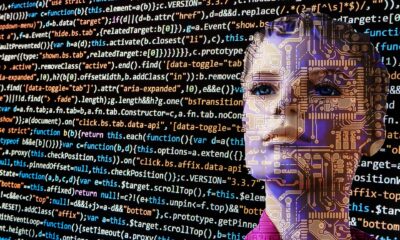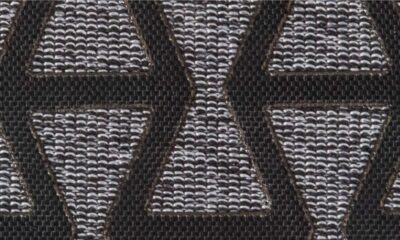Tech
How digital technologies can support a circular economy

The role of digital technologies, such as IoT, 3D printing, and digital platforms, holds significant potential for supporting a circular economy. However, digital technologies are not a magic fix that can instantly change how physical resources are used and produced to prevent waste and promote a circular economy.
In her doctoral thesis, Ida Eyi Heathcote-Fumador explores digitally mediated circular practices within ecosystems to understand the human–material interactions involved in enabling a digitally mediated circular economy. Heathcote-Fumador will defend the thesis on November 5.
Circular economy focuses on managing the use and creation of physical resources, products, residual materials, and by-products to prevent them from ending up in landfills as waste, while ensuring that organic materials safely return to the environment.
What challenges do you focus on in your research?
Material resources and their sustainable management are central to the circular economy, while digital technologies are often seen as more intangible, flexible, and having multiple functions. When examining the role of digital technologies, we often overlook the material characteristics that shape these technologies, as well as the human activities involved in ensuring that technological and material configurations align with the principles of sustainable material management.
How do you address the problem?
I studied two ecosystems, or groups of organizations working together: one in Ghana, Africa, and the other in Europe, specifically Sweden and Portugal. Both focused on using digital technologies to support the sustainable recovery of waste from the environment.
Through interviews, observations, and document analysis, I examined how physical materials, digital technologies, and human activities influence each other to create digitally mediated circular practices. I used a human-material tuning approach to understand the mutual roles of materials, digital technologies, and human actions in establishing circular practices.
What are the main findings?
I developed a model showing that the circular principles of resource care are central to activities leading to the emergence of digitally mediated circular practices. Human actions involve the collective imagination of sustainable futures for production and consumption, the prospecting of suitable materials and digital technologies, and their shaping to realize these visions. This shaping process, referred to as tuning—a term first introduced by Andrew Pickering (1993)—is akin to adjusting a radio to obtain a preferred signal.
For instance, the organizations I studied shared a strong commitment to reducing environmental waste by converting it into new products with the help of digital technologies. They identified discarded materials such as fishing nets and selected technologies like 3D printing to transform these wastes into new products.
However, because 3D printers are typically optimized for virgin materials, the process requires extensive experimentation to adapt the technology to recycled inputs. This perseverance, driven by care for both the material and the environment, enabled the successful realization of digitally mediated circular practices.
What do you hope your research will lead to?
My research aims to encourage both scholars and practitioners to consider the material and human activities of the circular economy when examining how digital technologies enable it. Circularity is based on specific principles, with materials at its center. Recognizing and documenting their influence can enhance our overall understanding of how material, digital, and human components interconnect, shaping digitally mediated circular practices. This comprehensive recognition will result in solutions that effectively promote a circular economy.
More information:
Digitally Mediated Circular Economy Practices in Ecosystems : A Human-Material Tuning Practice Perspective. research.chalmers.se/en/publication/548860
Citation:
How digital technologies can support a circular economy (2025, October 28)
retrieved 28 October 2025
from https://techxplore.com/news/2025-10-digital-technologies-circular-economy.html
This document is subject to copyright. Apart from any fair dealing for the purpose of private study or research, no
part may be reproduced without the written permission. The content is provided for information purposes only.
Tech
OnlyFans Goes to Business School
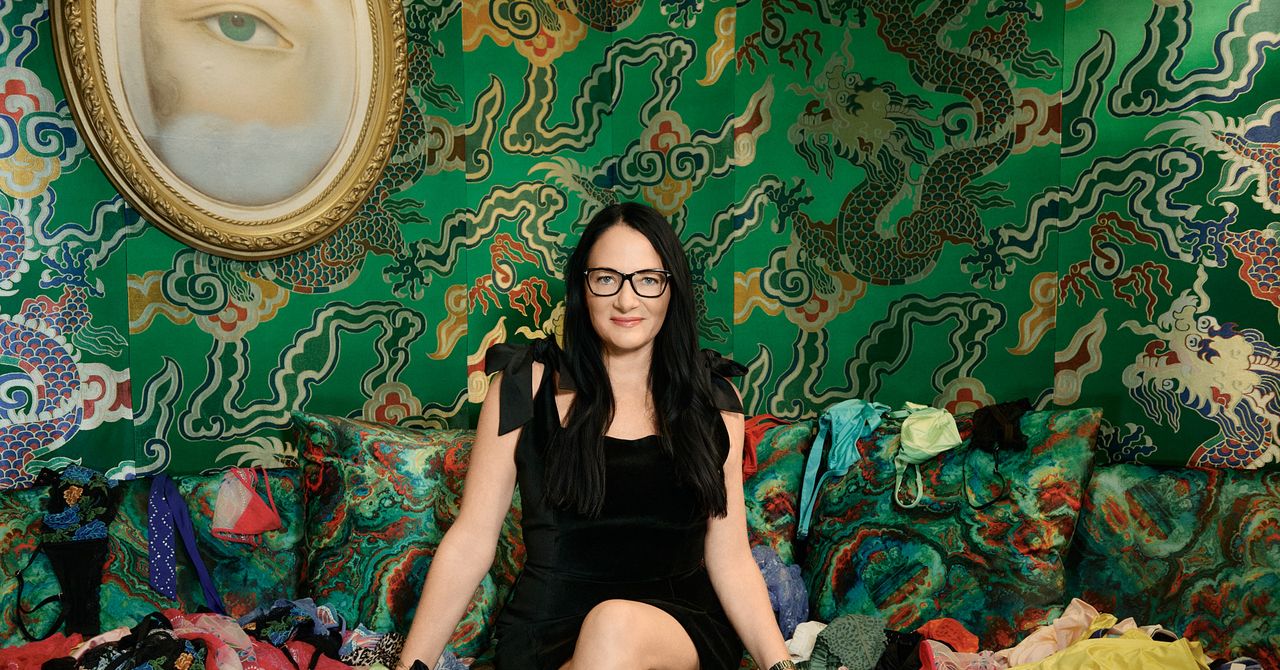
OnlyFans has tapped the founder of a lingerie company and former nude model to launch business classes on the platform.
Rachael McCrary, a longtime lingerie designer and founder of the company Spice Rack, is launching four videos on OnlyFans Wednesday. The videos are quite different from the usual OnlyFans fare. They’ll focus on pitching investors, building a brand, and navigating being an entrepreneur as a woman, McCrary tells WIRED. More videos will follow. She’s also creating a Spice Rack x OnlyFans clothing line that will launch on the site later this year.
The move is OnlyFans’ first foray into making content focused solely on building a business. It’s part of the platform’s continued push into safe-for-work content that’s meant to complement the adult content it’s known for.
“OnlyFans is a community of over 4 million creator businesses, so it makes sense that we are the perfect platform to share tips on entrepreneurship,” Keily Blair, CEO of OnlyFans, tells WIRED in a statement. “As we’ve seen in other genres like comedy and sport, it takes just one creator to recognize the opportunity and others will follow suit.”
McCrary, 48, said she met Blair at the tech conference Summit Baja last November, when they came up with the idea.
As a former SuicideGirl—a community of alt pin-up girls founded in the early 2000s—she says she felt stigmatized by her past when working in corporate fashion. At one of her jobs, she says her colleagues looked at her SuicideGirls photos while she was at work.
“I just wanted to start crying,” she says.
Then she decided to launch her own businesses, but “pitching underwear to tech VCs, I already felt like I had to prove myself more,” McCrary says. According to Inc., only 1 percent of VC-funded companies were wholly led by women in 2024. Spice Rack, which McCrary says is backed by Sequoia Partners China and Mucker Capital, is among them.
“Being naked on the internet and raising venture capital from the largest funds in the world is a very rare Venn diagram,” McCrary says, adding that OnlyFans was already looking to expand into more non-adult content. “We decided to do a masterclass format of business classes.” The first two classes will be free, while the others will require a subscription to McCrary’s page.
Over the years, McCrary says, she’s been approached by many young women, including sex workers, seeking advice on how to start their own businesses or pivot away from adult content. After she revealed her past as a SuicideGirl on a panel in 2022, she says an adult content creator came up to her and said, “I didn’t know that you were naked on the internet, and that makes me feel like I can have a career after this.”
Tech
Australian police design AI tool to decipher predators’ Gen Z slang

Australian police are working on an AI prototype that will help them decipher Gen Z slang and emoji-laden messages written by online predators, a top official said Wednesday.
Australian Federal Police Commissioner Krissy Barrett said social media had become a breeding ground for bullying, sexual exploitation and radicalization.
Police were working with software giant Microsoft to develop a tool that would unravel sinister messages hidden by seemingly innocuous emojis and slang, she said.
“Clever AFP members, with Microsoft, are developing a prototype AI tool that will interpret emojis and Gen Z-and-Alpha slang in encrypted communications.
“This prototype aims to make it quicker for our teams to save children from harm much earlier.”
Barrett also warned about the rise of so-called “crimefluencers”—online predators who used their social media savvy to target young and vulnerable users.
“They are crimefluencers, and they are motivated by anarchy and hurting others, with most of their victims pre-teen or teenage girls,” she said.
Australia will from December 10 force social media platforms such as Facebook, Instagram and TikTok to remove users under the age of 16.
There is keen interest in whether Australia’s sweeping restrictions can work, as regulators around the globe wrestle with the dangers of social media.
© 2025 AFP
Citation:
Australian police design AI tool to decipher predators’ Gen Z slang (2025, October 29)
retrieved 29 October 2025
from https://techxplore.com/news/2025-10-australian-police-ai-tool-decipher.html
This document is subject to copyright. Apart from any fair dealing for the purpose of private study or research, no
part may be reproduced without the written permission. The content is provided for information purposes only.
Tech
Nvidia, Cisco look to deepen AI innovation across 6G, telecoms | Computer Weekly
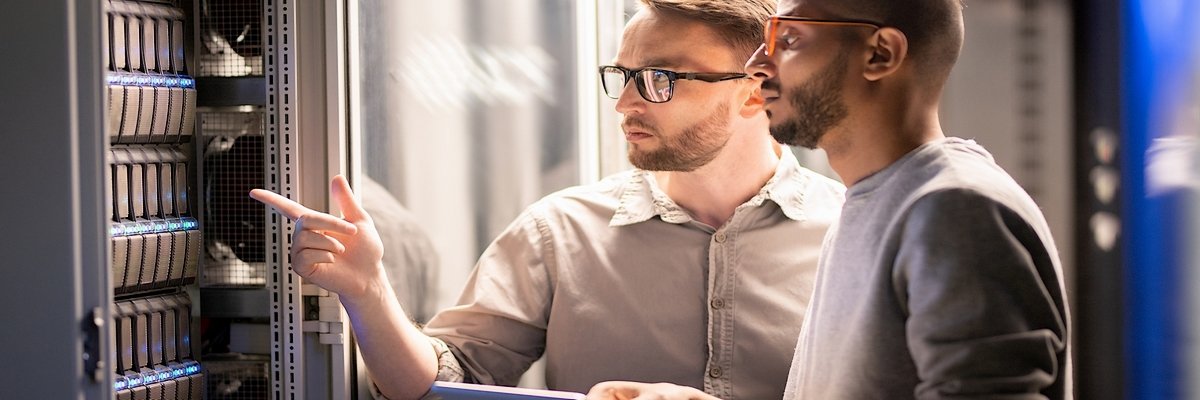
Cisco has announced advancements to accelerate secure, scalable artificial intelligence (AI) across market segments, in particular striking a partnership with AI leader Nvidia.
Cisco says back-end and front-end Ethernet-based networks must be flexible enough to keep pace with rapid AI innovation, integrate seamlessly with existing infrastructure, and be simple to deploy and manage.
Heading the AI-based service set is the Cisco N9100, said to be the first Nvidia partner-developed datacentre switch based on Nvidia Spectrum-X Ethernet switch silicon. With this switch, Cisco says it’s offering an Nvidia Cloud Partner-compliant reference architecture for neocloud and sovereign cloud deployments.
Available to order before the end of the year, the Cisco N9100 series switches offer a choice of Cisco NX-OS or Sonic operating systems, supporting Ethernet for AI networks, and providing greater flexibility in how neocloud and sovereign cloud customers build their AI infrastructure. Additionally, for neocloud and sovereign cloud customers, the Cisco Cloud Reference Architecture is based on the design tenets of Nvidia’s Cloud Partner reference architecture, and uses Cisco’s Silicon One and Cloud-scale ASIC offerings.
For enterprise customers, Cisco Secure AI Factory with Nvidia claims to offer strengthened protection and visibility across AI deployments with new security and observability integrations.
Unveiled in March 2025, the Cisco Secure AI Factory with Nvidia is designed to offer enterprises an architecture for AI infrastructure that puts security and observability at the forefront without sacrificing performance. With Cisco AI PODs and Cisco Silicon One-powered Nexus switching as a foundation, Cisco says it’s now delivering new capabilities and features across security and observability; core AI infrastructure; ecosystem expansion; and government readiness.
In what the companies say is an attempt to pave the way for next-generation connectivity in the telecoms industry for the AI era, Cisco, Nvidia and additional partners unveiled what they described as the industry’s first AI-native wireless stack for 6G.
Explaining the rationale for activity in this area, Cisco said that as AI moves from smartphones to more connected things – such as augmented reality glasses, connected cars and robotics – wireless networks face mounting demands to support billions of connections at unprecedented scale and efficiency. To address these issues, Cisco and Nvidia say they have developed the first American AI-RAN stack for mobile networks that integrates sensing and communication, with multiple pre-6G applications.
When combined, Cisco believes the offerings can present to neocloud, enterprise and telecom customers the flexibility and interoperability to efficiently build, manage and secure AI infrastructure at scale.
“We’re at the beginning of the largest datacentre build-out in history,” said Cisco president and chief product officer Jeetu Patel. “The infrastructure that will power the agentic AI applications and innovation of the future requires new architectures designed to overcome today’s constraints in power, computing and network performance.
“Together, Cisco and Nvidia are leading the way in defining the technologies that will power these AI-ready datacentres in all their varieties, from emerging neoclouds, to global service providers, to enterprises and beyond.”
-

 Fashion1 week ago
Fashion1 week agoChinese woman charged over gold theft at Paris Natural History Museum
-

 Entertainment1 week ago
Entertainment1 week agoJohn Grisham unveils his first-ever mystery, “The Widow”
-

 Tech1 week ago
Tech1 week agoThis Smart Warming Mug Is Marked Down by $60
-

 Tech1 week ago
Tech1 week agoEaster Island’s Moai Statues May Have Walked to Where They Now Stand
-

 Fashion1 week ago
Fashion1 week agoThe North Face and Cecilie Bahnsen launch second collaboration
-

 Tech1 week ago
Tech1 week agoOpenAI has slipped shopping into ChatGPT users’ chats—here’s why that matters
-
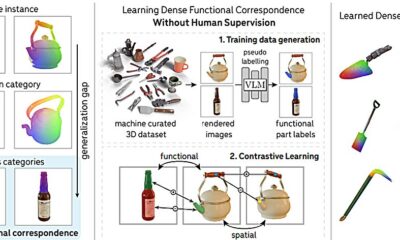
 Tech1 week ago
Tech1 week agoAI model could boost robot intelligence via object recognition
-

 Politics4 days ago
Politics4 days agoTrump slams ‘dirty’ Canada despite withdrawal of Reagan ad




